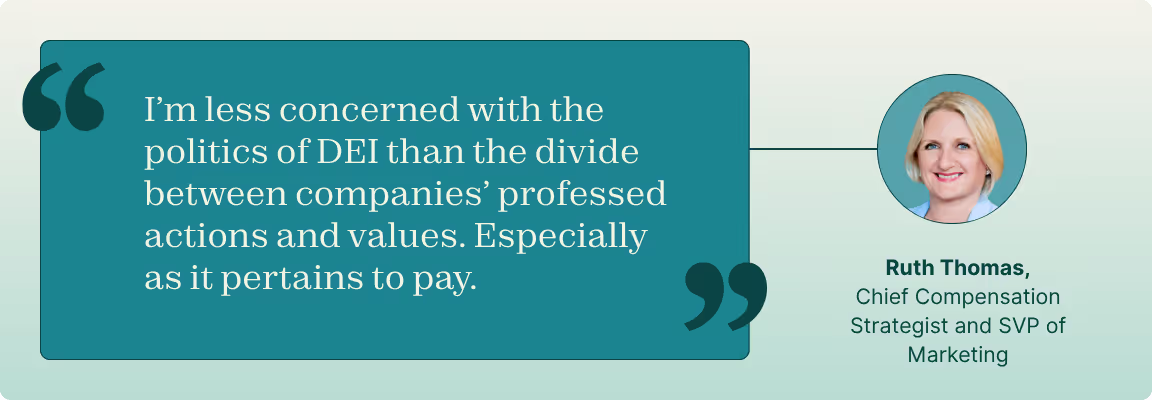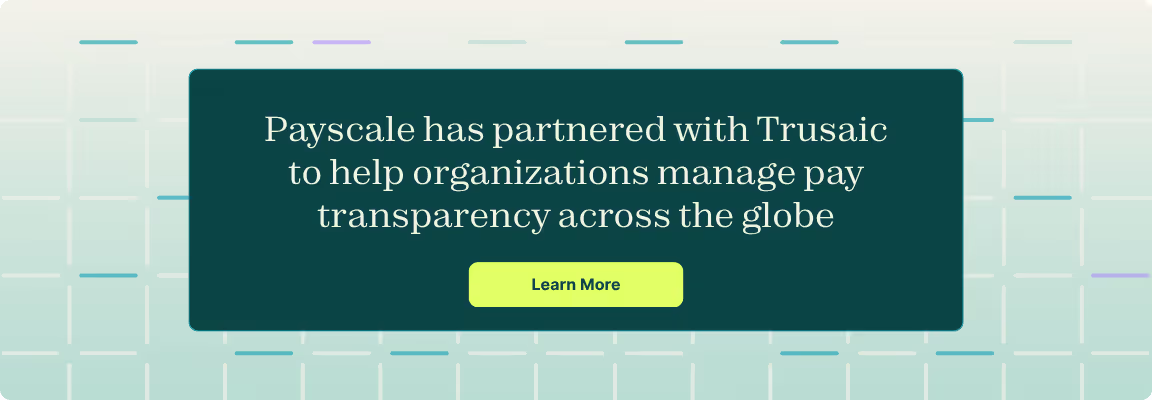I would like to raise an uncomfortable question: How many HR mission statements or diversity pledges drive impact and how much is corporate theater?
I’m not trying to ruffle feathers. Like many HR practitioners, I sincerely believe in diversity, inclusion, equity, and belonging.
But I’ve been practicing compensation for a long time, and I also know that equality isn’t realized in your mission statement or commitment to DEI. Instead, it shows up in how you pay your people.
Pay equity is the true measure of your company’s commitment to equality. What organizations pay their employees speaks louder than whatever they say in a diversity pledge.
An idea whose time is being reconsidered
Recent public rhetoric surrounding DEI has become a political grenade.
Depending on where you stand, you’re either upset about companies scaling back DEI efforts or celebrating alleged color-blind fairness.
Yet amid all the noise, we lose sight of the most measurable commitment: pay equity is a core pillar of DEI, ensuring employees are fairly compensated regardless of their race, gender, or other demographics.
Pay equity is far from a new idea. Susan B. Anthony and her fellow activists led the rally cry “Equal Pay for Equal Work” in the 1860s. The movement picked up significant steam after World War II, leading to the passage of The Equal Pay Act of 1963.
We faced another tipping point in the wake of the Black Lives Matter Movement in 2020. As companies rushed to issue statements affirming their commitment to inclusivity, it felt as though equality might finally be cemented in corporate practices.
Then came the backlash. The retreat from DEI.
I don’t intend to wade into this debate. I’m less interested in the politics of DEI and more concerned with the divide between companies’ professed values and actions. Especially as it pertains to pay.

After all, despite decades of good intentions, women still earn less than men, even when they’re performing the exact same role.
Significant gender and racial pay gaps persisted long before DEI intiatives came under attack. The cynic in me wants to call out this corporate bluff. Were you ever really interested in equality? While then, let’s look at how your people are paid.
Compensation reflects an organization’s values more than any public statement or commitment to diversity. Mission statements are easy to write. Press releases cost virtually nothing.
But pay? That requires budget allocation, executive buy-in, and a real commitment to changing the status quo. It’s where rhetoric butt heads with reality.
If your pay practices don’t align with your professed principles of equality, your values aren’t aspirational — they’re hollow.
The question organizations must ask themselves is: do our pay practices actually reflect our values?
We won’t have to wait long for the answer. Transparency is the new coinage of pay. And unlike mission statements or other virtue signaling, it will tell us how serious companies are making good on the promise of pay equity.
Will pay transparency sound the death knell for bias?
Pay transparency is also not a new idea. The 1935 National Labor Relations Act protected workers’ rights to discuss pay openly. Still, social conventions and taboos surrounding the discussion of salaries proved tougher to unwind.
Ninety years on, many employers (and employees) still refuse to talk openly about pay. Landmark legislation, such as aforementioned Equal Pay Act of 1963 and Lilly Ledbetter Fair Pay Act, didn’t resolve wage gaps for women, people of color, and other demographic groups, in large part because pay has been a secret.
Pay disparities that would otherwise be illuminated grow with opaque compensation practices. But the push for pay transparency signals the end of an era when bias and pay inequities exist in the dark.
In 2018, California became the first state to pass a pay transparency law. Recognizing that historical wage inequality plays a role in current pay gaps, the Golden State passed legislation that prohibited employers from asking about an applicant’s salary history.
Today, fourteen states have followed suit, including Colorado, New York, Illinois, Massachusetts, New Jersey, Vermont, and Washington State. Their laws require employers to disclose salary ranges in job postings, with specifics varying by company size and jurisdiction.

The pay transparency trend is accelerating rapidly, with nearly 50% of employees expected to be covered under some law by 2026.
There’s also been an equally significant cultural shift around pay. Employees are more apt than ever to discuss their salaries openly with friends and colleagues. They’re also increasingly turning to online resources and AI to determine if their pay is fair.
Yet 41% of employees say they’ve never had a conversation with their employer about how their pay is determined, which both sours pay perceptions and likely worsens inequities for historically disadvantaged groups.
Armchair experts sometimes blame women and people of color for pay gaps, citing anecdotal evidence about these groups’ reluctance to ask for higher wages.
Let’s go ahead and debunk this falsehood for once and all. Research out of Vanderbilt University shows women are just as likely as men to ask for pay increases. They’re just denied more frequently, both at time of hire and during their tenure at organizations.
This is why transparent pay practices matter more than lip service to corporate values. It’s far too easy for employers to gloss over unjustifiable pay disparities by pointing to the number of women in leadership roles or by referencing their company’s mission statement.
Public salary ranges make hiding systemic bias more difficult. You can’t explain away why two people in identical roles earn wildly different salaries when it’s open information.
Transparent pay practices don’t rely on promises or PR. Instead, it forces accountability by shining a light on the actual problem.
Good intentions pave the road to hell. Transparent pay practices lay the groundwork for equality.
Just to be clear once again: I’m not saying DEI initiatives don’t matter. The argument I’ve proposed here is that vague commitments to diversity, equity, and inclusion won’t ensure equal pay for equal work.
Just Google “pay discrimination lawsuits” and you’ll find plenty of companies with strong diversity statements writing out settlement checks.
Employers will soon find it more difficult to hide behind performative equity. With the EU Pay Transparency Directive coming on June 7, 2026 and more states with pay transparency laws pending a vote, it’s only a matter of time.
While Payscale’s partnership with Trusaic and recent acquisition of Datapeople ensures you’ll nail the compliance piece, I would encourage every company to ask themselves: what kind of organization do we want to be?
After all, you likely didn’t go into HR to meet the bare minimum of compliance. You pursued our profession because you wanted to make employees’ lives better. Like me, you care about equality. You give a damn about justice.
And the shortest path to making this a reality isn’t rewriting your mission statement or clarifying your values. It’s paying your people what they’re worth.
We’ve been getting pay right for 23 years.




.png)

